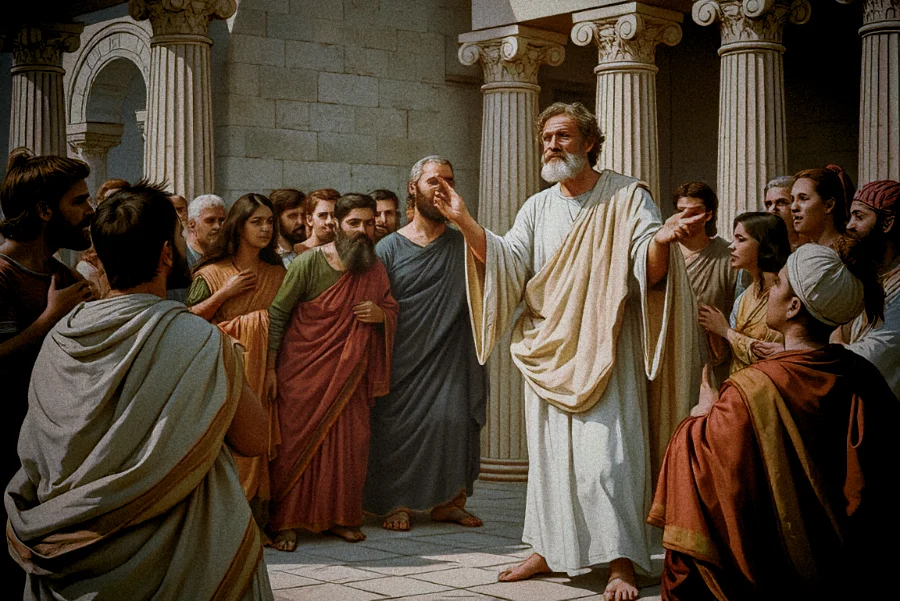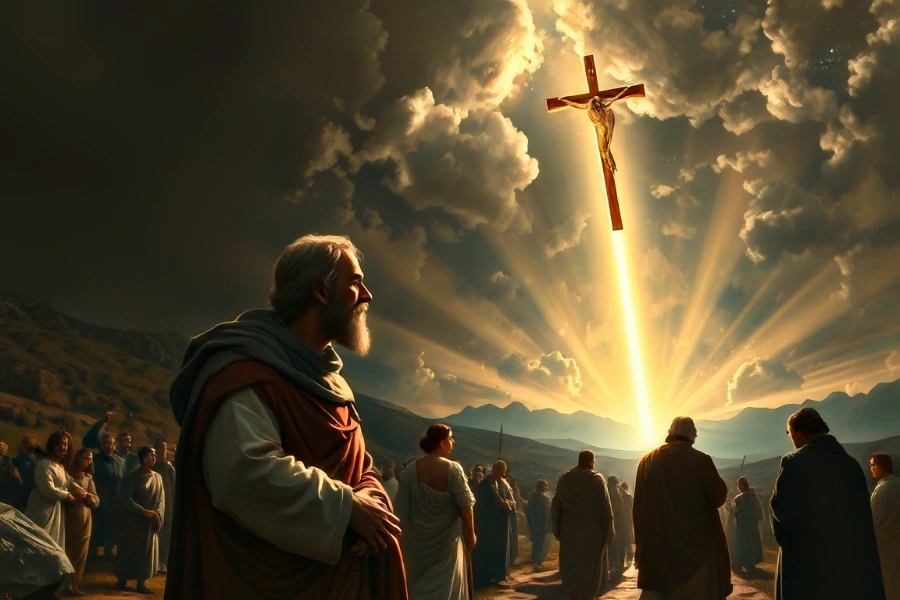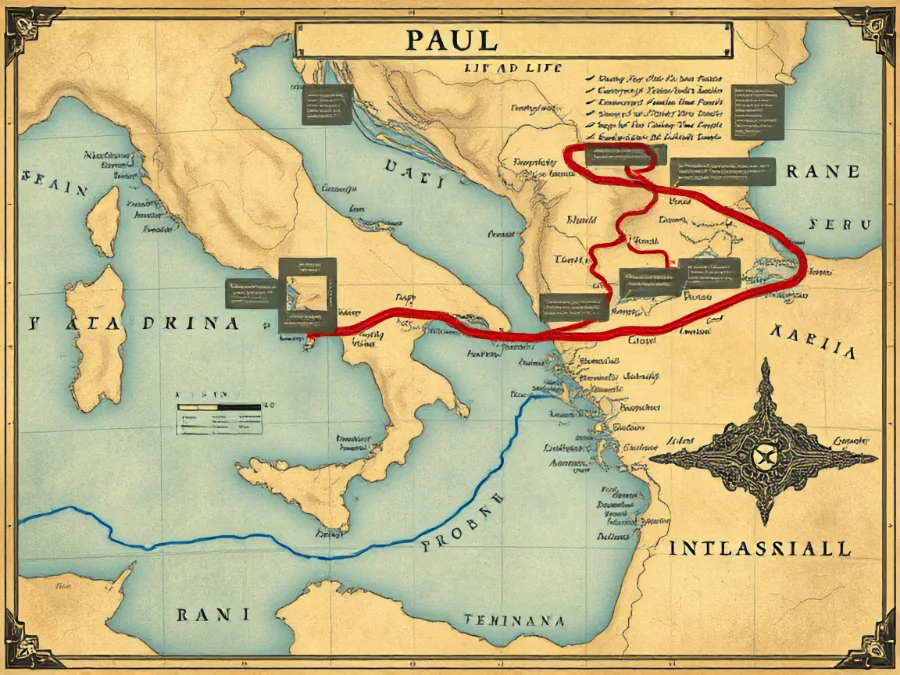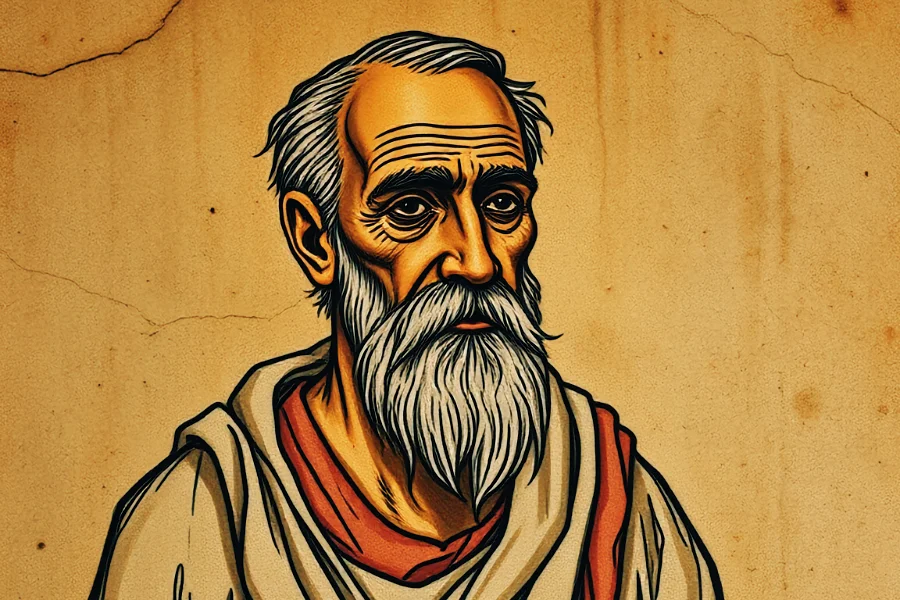The Apostle Paul’s mission to evangelize the Gentiles represented a significant turning point in the early Christian movement. In Greek, the term “Gentiles” translates to “nations,” highlighting Paul’s intention to spread the teachings of Jesus beyond the confines of Jewish communities. In ancient times, before Israel and Judah united as a single kingdom, the inhabitants of Judah referred to the people of Israel as a separate nation, thus categorizing them as Gentiles. This distinction illustrates the complex relationships among these groups, which Paul sought to bridge through his ministry. My previous discussion touched on the foundation of the Old Testament, providing a backdrop to understand this pivotal moment in history.
Apostle Paul Preaching

As he journeyed through significant cities like Corinth, Ephesus, Damascus, and Rome, Paul skillfully conveyed his message about the risen Christ. He stressed the imminent arrival of the Kingdom of Heaven, a concept not entirely new, as various Jewish sects had espoused similar beliefs. In a world marked by suffering from death, slavery, and illness, his proclamation offered hope for salvation through faith in a higher power. This message resonated deeply with individuals facing social, economic, and political hardships. Central to his preaching was the belief that faith in the Lord Jesus Christ (a name of Greek origin) precedes good deeds.
Paul’s preaching of the last days
Paul’s dispute with the Jerusalem church
Paul’s epistles reached many audiences, effectively dismantling cultural barriers by prioritising faith over ethnic lineage. His growing following included various groups, from Orthodox and Marcionite Christianity to certain Gnostic factions. Despite his success, Paul faced opposition, though specific details remain ambiguous, requiring scholarly interpretation. His letters reveal disputes with prominent figures such as Peter and James, the brother of Jesus, while groups like the Ebionites labelled him a heretic.
Moreover, Paul’s unwavering dedication, combined with his education in Middle Platonism and financial resources, attracted many to his cause. Notable deviations from traditional Jewish practices that Paul introduced included:
- The exemption from circumcision
- The allowance of non-kosher foods
- The relaxation of Sabbath observance
These changes made his teachings more accessible to Gentiles. By integrating these innovations into a Jewish framework that presented an omnipotent and forgiving God, with the primary requirement of worship, Paul effectively communicated his message to a broad audience. This approach fostered a growing community of believers that transcended ethnic divides, significantly expanding the Church’s foundation and setting the stage for future theological debates regarding salvation and the universal nature of God’s love for humanity.
Apostle Paul conversion

The details surrounding Paul’s conversion remain somewhat ambiguous, particularly regarding the nature of the event itself. The most prominent account appears in the Book of Acts, which narrates Paul’s experience of a blinding light on the road to Damascus, leading him to fall and hear the voice of Jesus asking, “Saul, Saul, why do you persecute me?” (Acts 9:1-19). Paul later recounts this transformative moment in chapters 22 and 29, a repetition that has intrigued historians due to various historical inconsistencies. These three accounts present several conflicting elements: in one version, Paul’s companions witness the light but do not hear the voice; in another, they hear the voice yet do not see anyone. Additionally, while one narrative claims that all present fell to the ground, another asserts they remained standing. One account indicates that Paul is directed to Damascus for guidance from a disciple, while another suggests he receives immediate instructions from Jesus. Such discrepancies indicate that the narrative might have been crafted for literary purposes rather than as an exact historical record. Notably, the Book of Acts was likely composed approximately a century after the events described. The author seems to have built upon the earlier Gospel of Luke by weaving in the narrative of Acts. Paul’s distinctive approach to ministry significantly altered existing beliefs, permitting Gentiles to embrace Christianity without adhering to traditional Jewish law. He regarded himself as a fulfiller of the law, highlighting the importance of the Messiah’s sacrifices. The motif of hearing voices and witnessing light also appears in the Gospel of Peter, serving as a narrative device used by ancient authors to engage their audiences effectively.
apostle paul timeline

In 6 AD, Paul, also known as Saul, entered the world into a Roman family with Jewish roots in Tarsus, located in present-day eastern Turkey. His journey unfolded through significant chronological events:
- Between 20 and 30 AD, Paul immersed himself in Torah studies under the tutelage of the esteemed Gamaliel in Jerusalem, embracing the Pharisaic tradition.
- From 30 to 33 AD, he actively opposed the early Jerusalem church linked to the Jesus movement in Judah.
- In 33-36 AD, a transformative conversion on his way to Damascus changed him, leading to years in Arabia before returning to proclaim Jesus as the Messiah in Jerusalem and Damascus.
- The year 36 AD marked his travel to Jerusalem to meet with James and Peter in response to mounting threats in Damascus.
- By 44 AD, his teachings had spread across Tarsus and nearby regions, with an invitation from Barnabas to teach in Antioch.
- In 44-46 AD, a mission with Barnabas to Jerusalem aided during a famine.
- The pivotal year of 49 AD saw Paul advocating for Gentile inclusion at the Council of Jerusalem, leading to further journeys and correspondence with various communities.
- Throughout the years 49-64 AD, Paul embarked on multiple missionary endeavors, wrote significant letters, faced arrest, and ultimately met martyrdom in Rome.
Paul’s unwavering commitment to the Gentiles not only changed individual lives but also redefined the core of early Christianity. He created communities that embraced diversity, promoting an inclusive environment where faith overcame cultural barriers. By highlighting salvation through grace instead of strict adherence to the law, he welcomed a wider audience into the faith. His thoughtful use of letters further reinforced this unity, as these writings tackled genuine issues and provided support to emerging congregations. In this way, Paul established the foundation for a church that would grow into a global movement, crossing boundaries and bringing together believers from various backgrounds.
Pauls death

The death of Paul is thought to have taken place after the Great Fire of Rome in July 64 AD but before the end of Emperor Nero’s rule in 68 AD. In a letter to the Corinthians, Pope Clement I notes that after Paul “had testified before the rulers,” he “left this world and went to the holy place, having shown a remarkable example of patience.” Similarly, Ignatius of Antioch refers to Paul as being “martyred” in his Epistle to the Ephesians, although he does not detail the specific events surrounding this martyrdom. Tertullian states that Paul was “crowned with a departure like John,” but it is unclear which John he means. Eusebius records that Paul was executed during Nero’s persecution and references Dionysius of Corinth, who claims that Peter and Paul were martyred “at the same time.” This is supported by Sulpicius Severus, who mentions that Peter was crucified while Paul faced beheading. John Chrysostom recounts that Nero imprisoned Paul but provides no further details about his execution or mention of Peter. Lactantius simply states that “[It was Nero] who first persecuted God’s servants; he crucified Peter and killed Paul.” In his letters to the Romans, Paul expressed a wish to travel to Spain, raising the possibility that he may have journeyed there and met his end.
Summary
A significant portion of our knowledge about Paul the Apostle comes from his epistles, which were likely written and collected over an extended period. The methods of transmission, translation, and copying of these ancient texts are susceptible to inaccuracies. It is crucial to acknowledge that different scribes frequently had their own theological agendas, which could have impacted how they recorded the writings. Additionally, the Acts of Paul seem to represent the evolving interests of early Christians, who sought to articulate their particular understanding and interpretation of the Christian faith.

